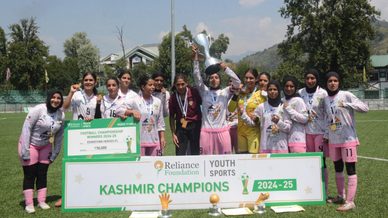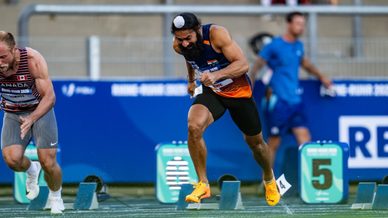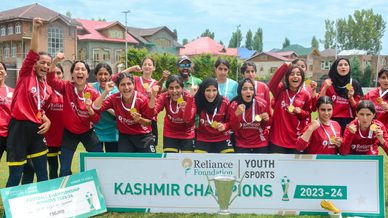Why Grassroots and Youth Sports Competitions are key to our sporting future
To help our athletes understand the process of Grassroots and Youth Sports Competitions better, we recently conducted a webinar on this topic, as part of our Online Education Programme.
Research suggests that the sports industry is poised to grow at about 20% over the next decade and contribute between 1 – 5% of India’s GDP.However, unless India makes a structured effort to broad-base sports & increase participation at the grassroots level, we will continue to lag behind, not just on social development & youth inclusion parameters but also deliver limited success at world sports events.
To help our athletes understand the process of Grassroots and Youth Sports Competitions better, we recently conducted a webinar on this topic, as part of our Online Education Programme. The session, carried out by Arki Nongrum, AIFF Grassroots Instructor and Development Panel Member, Advisor and Consultant to the Meghalaya Football Association, and Vineet Basu, Consultant, Ernst & Young Global Consulting Services, was designed to shed light on the intricacies of the overall sports ecosystem.
Our experts introduced the topic by explaining the components that are part of the sports ecosystem and they can be best described through the chart given below:

With respect to the above components, they also explained why it is important to know your ecosystem and how to follow a technical and tactical approach, through the below-mentioned points:
- Each state has its own strengths and weaknesses and it is essential to understand them
- Local/grassroots understanding of your own state or district is vital
- Create micro goals and use AIFF’s strategic plan to move towards a national goal
- The number of grassroots and youth coaches can help determine your technical development approach (player, competition, coaches, etc.)
- Sports culture in the region can help determine tactical development approach (festivals, stakeholders, engagements, etc.)
The above points were explained comprehensively by our experts by taking the example of the Meghalaya Football structure. It can be better understood by the chart given below:

After explaining the above structure, our experts then shed light on the structured competition pathway that is being followed when it comes to such programs. The chart below will let you know how it’s carried out:

As the webinar progressed, our experts then mentioned the crucial outcomes of the grassroots competitions which were basically divided into three categories which included:
- Vision
- Outcome
- Goal
1) Vision - It includes the development of a pool of grassroots talent with an understanding of game-time success factors and the potential for moulding into competition-ready elite players.
2) Outcome - It consists of regular engagement of children in competition format to foster technical, psychological, and social development while enhancing local employment opportunities and community engagement.
3) Goal - Ensuring every child wants to come back the next day and also the creation of a safe, wholesome environment for the children and parents.
As the webinar moved towards its conclusion, our experts laid emphasis on the importance of education and sports and how balanced development and partnerships can help take these competitions ahead in the long run. The charts below will help you understand both the aspects clearly:
1) Balanced Development:

2) Balanced Partnerships:

A systemic and cultural change like this is a slow process and bears fruit over time. We need to have the patience and the resolve to ride out this journey by taking the correct measures and approach throughout by building a strong base. But while doing that, we should also never forget that we have to build a thought momentum from today.
In case of queries or if you have any suggestions for webinar topics, please feel free to connect with us on Instagram/Facebook or email us at info@rfyouthsports.com












Your Comments